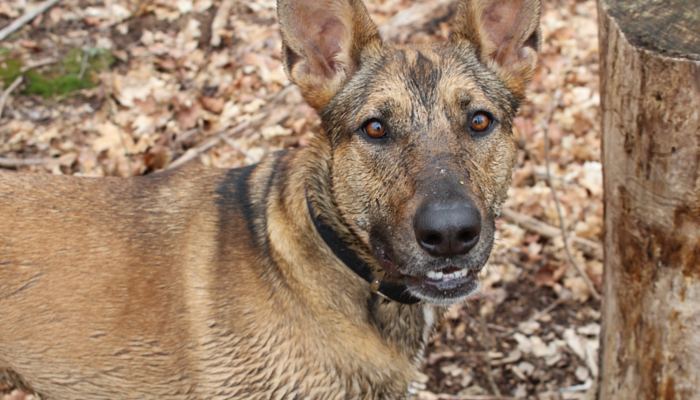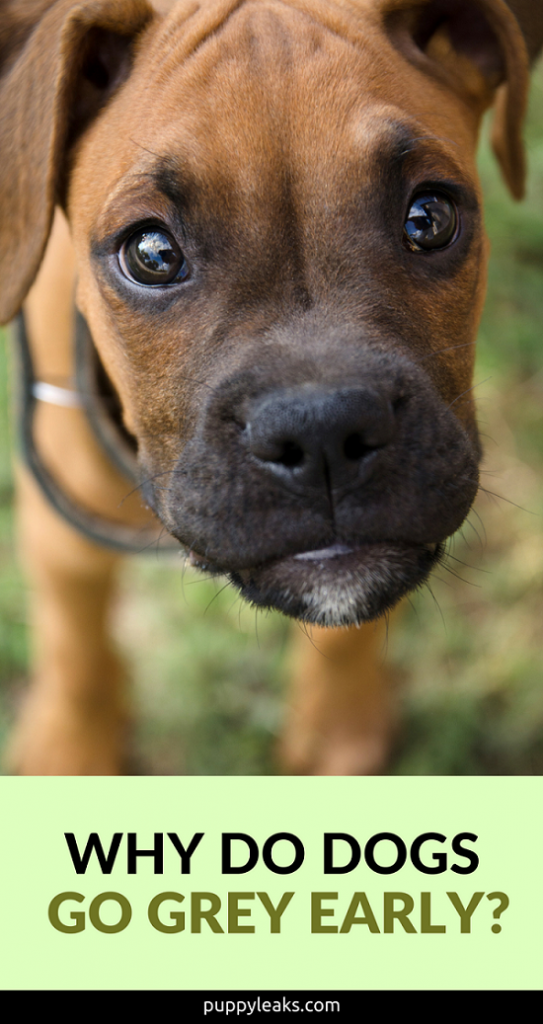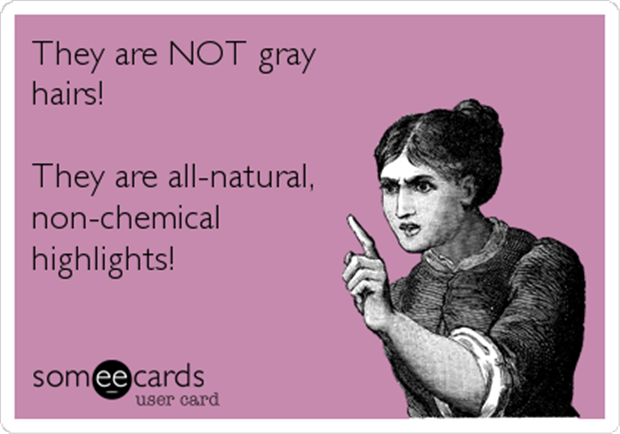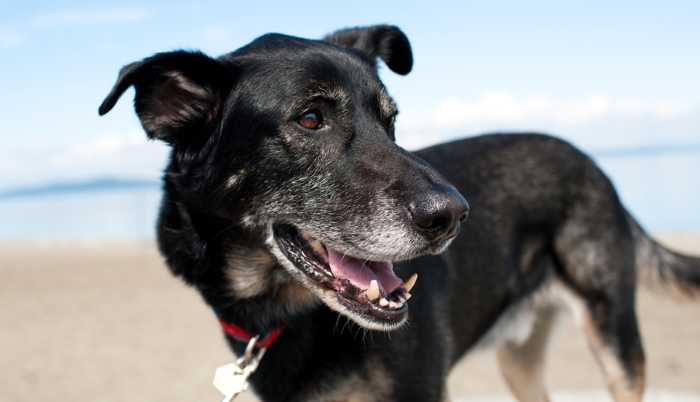Why Do Dogs Go Grey Early?
Laika’s already going grey, though she’s only 3 years old. Looking back all of my dogs went grey eventually, but it never started quite that early.
So it got me wondering — why do dogs go grey early anyway? It it all genetics? Is it stress related? And why do some dogs go grey much earlier than others?
Why Do Dogs Go Grey Early?
Is your dog doing grey around the muzzle? Just as it is with humans there’s a couple different reasons as to why some dogs go grey early while others don’t grey much at all.
Two major factors come into play when it comes to dogs going grey — stress and genetics. Dogs with high levels of psychological stress or anxiety have been found to grey earlier, and the cellular stress that causes grey hairs has a genetic component in dogs.
On average most dogs start going grey around 5 years old, though some start going grey before the age of 2. Greying in dogs can occur anywhere, but it tends to be most prominent on their muzzle.
Geriatric vs Progressive Greying in Dogs
The premature greying I’m talking about with Laika is called geriatric greying, and it usually starts around the muzzle. It’s the greying that’s associated with the aging process, the same one that happens to humans.
There’s another type of greying that certain breeds go through called progressive greying. It’s caused by a progressive greying gene that causes their coats to turn grey or silver. This type of progressive greying is attributed to chromosome 25, though the gene itself has not been found.
Some breeds, such as Poodles and Bearded Collies, have the greying gene that causes their entire coat to turn silver. Because the progressive greying gene is dominant it’s also seen in some mixed breeds, especially in the UK where Bearded Collie & terrier crosses are common.
What Causes Premature Greying in Dogs?
Though the specific gene that causes premature greying has yet to be found, experts say that cellular stress is what causes grey hairs. Over time we create less melanin, the black or brown pigment that occurs in the hair, skin & eyes of humans & animals.
Scientists traced the loss of hair color to the gradual dying off of adult stem cells that form a reservoir that spawns a continuous supply of new pigment-manufacturing cells, called melanocytes, that give hair its youthful hues. – Science Daily
The Influence of Genetics On Going Grey
Genetics is a big influence when it comes to premature greying, in both dogs and humans. The pigment cells that give hair it’s youthful color are called melanocytes, and when they die off or grow incorrectly greying starts to occur.
Cell survival in general is influenced by an “anti-death” gene known as Bcl2. So the study included mice without the gene. Turns out they lose their melanocyte stem cells shortly after birth and turn gray quickly. Could be, Fisher said, that people who gray prematurely have mutations that knock out Bcl2. – Live Science
The pigment cells responsible for our hair color undergo levels of cellular stress that lead to greying. When they die off or develop in the wrong part of the hair follicle our hair goes grey.
The blame lies on “genotoxic stress,” or stress from mutagens that can cause damage to DNA, such as ultraviolet light. The researchers found that this cellular stress diminishes the supply of melanocyte stem cells (MSC) — cells in hair follicles that are responsible for making the pigment-producing cells that give hair its color. – Live Science
The Influence of Stress in Premature Greying in Dogs
We’ve all heard that stress can cause premature grey hairs, but can the same be said for our canine companions? Scientists are trying to figure this out, but early research points to yes.
One recent study surveyed the owners of 400 dogs aged 1-4 who were showing signs of premature greying. Based on answers provided researchers concluded that psychological stress & anxiety may indeed play a role in the premature greying of young dogs.
Researchers were able to predict premature greying in dogs that exhibited anxious or impulsivity behaviors at home. These include:
- Fear of noises
- Fear of unfamiliar people or animals
- Jumping up on people (being impulsive)
The study did not find any predictors of premature greying when looking at a dogs age, size, sex or spay/neuter status.
The current dog study by King and colleagues finds that premature graying could link up with anxiety, impulsivity, or fear issues, which are not fabulous if you are a dog. – About That Premature Greying, Scientific American
Can Medical Issues Cause Greying?
In a few instances your dogs early graying could be caused by a medical issue. If you suspect your dog has a medical problem please consult your veterinarian.
One of the main symptoms of hypothyroidism is multiple hair changes which includes hair loss, coarseness, dark skin pigmentation, and premature greying of the muzzle.
Clinical symptoms of the disease include hair loss, premature graying of the muzzle, hair coat dryness, retarded hair growth, and dark skin pigmentation. – St. Georges Veterinary Hospital
A Grey Muzzle Doesn’t Always Indicate an Older Dog
Because of all the variables associated with coat colors a dog’s grey muzzle isn’t always an accurate way to estimate age. Dogs as young as 2 can have a lot of grey around their muzzle and eyebrows, though it’s often associated with dogs in middle to old age.
The condition of a dog’s teeth can usually give a more accurate indicator of a dog’s age, though it’s not an exact science because of outside influences. Estimates are made by the amount of tartar buildup and how worn down the incisors are. A dog’s lower incisors tend to remain uneven until a dog reaches middle age.

Though Laika has premature greying her uneven lower incisors are a more accurate indication of her age.
So When Does a Dog Normally go Grey?
On average it’s around 5 years old, but varies greatly. Premature greying is rarely cause for medical concern, but as always if you suspect something may be wrong please consult your veterinarian.
When it comes to going grey early dogs are just like us. Some go grey really early, some never will, but most are somewhere in the middle. Premature greying is just an aesthetic thing, and rarely cause for concern.
Age is an issue of mind over matter. If you don’t mind, it doesn’t matter. – Mark Twain

Enjoy this post? Share it with your friends.
Check out out More of Our “Why Do Dogs” Series:
- Why Do Dog Feet Smell Like Fritos?
- Why Do Dogs Go Crazy After a Bath?
- Why Do Dogs Like Belly Rubs?
- Why Do Dogs Have Spotted Tongues?

My favorite comeback about grey hair via dumpaday


I’ve been looking for grey on Honey’s muzzle since she turned 5 years old. Surprisingly her first grey hairs are on her back.
And now she’s starting to get grey around her eyebrows.
I guess if I wanted to predict how she’d grey I should have looked at pics of her parents.
I did read this article which I think you’ll enjoy. The author speculates about the possible link between reddish coloring and premature greying in Goldens: http://retrieverman.net/2012/07/19/why-do-golden-retrievers-turn-gray-so-early/
My 2 yr old golden retriever has developed what I call rooster tail which is very white, right on the topic her head. Could this be from the sun??
I know that some Goldens are prone to having a few white spots (usually on the bridge of their nose & chest) and it’s been attributed to certain lines, but that’s generally seen when they’re very young puppies & most of them darken as they age. As far as I know I have not heard of cases in which the sun seems to be causing white hairs to develop. It might be time to take your dog to the vet for some blood work just to rule out some of the medical issues that can cause hair discoloration (hyperthyroidism, Cushings).
Very interesting! I was wondering if it was similar to humans, and you answered that question. My boyfriend has had gray hairs since he was 18 years old. When I was vet tech-ing, we always used teeth as an indicator of age as you mentioned. Gray fur could have played a small part in aging dogs, but probably on a more subconscious level. We never looked at one and said “oh, he has gray fur so he’s definitely old”.
This is fascinating and thank you for posting it! I actually had a major meltdown one day because one of my friends said that Zoe was looking more grey in the face. :'( Cue panic attack. This makes me feel a lot better!
I don’t worry too much about premature greying. My mom was grey in her teens and my dad in his 20s. You don’t need a degree in genetics to realize that I went grey early too. As for my dogs? Lilah has grey around her muzzle (she’s 6) which shows up really well because she has black fur. And Jasper has been grey since the day we got him — silver fur that shows throughout.
–Wags (and purrs) from Life with Dogs and Cats
This is so interesting. Haley started going gray early, around 4 years old. Someone once told me that black dogs go gray early and especially black and white dogs, but I think it’s probably a myth. I’ve grown to like Haley’s gray face now but it bother me a little when it first started. Tell Laika that she’s not alone, haha! 🙂
Great post! Something I’ve always been curious about. Sydney started going grey around the muzzle at 2 years old. And with her injury slowing her down, people thought she was a senior dog. She’s getting spry again, but the grey is still there (she’s 5 now – so right on time).
Great post! My Papillon doesn’t have grey fur but when he was around 2 or 3 a lot of white hairs started to grow in the black parts of his muzzle. It’s progressed more as he’s aged. He’s almost 7 now. Despite this people always act really surprised when I tell them his age. His muzzle may make him look older, but he still has the energy of a puppy!
our Papillon has the same exact issue.. amazing.
My Papillon will be 7 years old in March and has gotten a lot of white hair around muzzle and on his head that used to be brownish red. It started when he was about 3 or 4. He still has the same energy he always has also.
Interesting – we don’t know how old Jack is and since he’s yellow, it’s hard to see any grey. I”m going to go read that Princeton article about the teeth.
I’ve been going grey since my late 20’s. LOL Sampson’s been grey for a couple of years now, but Delilah just recently started.
Very interesting read. I have a pit/mastiff mix with a copper brindle pattern that has had grey around his muzzle since he was 2 (he’ll be 3 this February). At first I thought they were just a lighter golden color that could be found in places on his body, but looking more closely, they definitely look grey. He’s still a young dog, very much acts the puppy.
I was surprised when I noticed a few greys on my spaniels chest and back, a few months ago, he’s only 21months old now! He has a very shiny black coat, so he’s definitely healthy. He spends a lot of time outside in the sun, so hopefully the cause of the grey is simply the sun and genetics.
is this why my Mini Aussie’s white chest fur is turning gray? I’d like to brighten it, any ideas?
Here is a recent study on this topic: http://www.tjsmith.org/King-2016.pdf
Thanks for the great find.
I don’t think Mark Twain said the “you don’t mind – it don’t matter” statement. Someone who will never get credit said it :).
My dog is a Patterdale Pug cross with black fur his back legs have turned almost completely grey and his shoulder area has started turning now along with the top of his head and he is only 14 months old my vet says it happens a lot in terrier cross dogs but I have never seen it before.
Thanks for the info. My 2.2 year old black cockapoo is getting white hair in his body fur. He was born a white streak on his chest and under his chin and a few swirls of white on the back of his legs. He also exhibits anxiousness with barking at things that are out of place, new and unexpected people, and jumping on people. He is sensitive. Doc has called him submissive. I am hoping he will become silver.
Super interesting! My whippet rescue mix has been greying at the muzzle since about 1.5 years and he is 2.5 years now and still continuously greying… No signs of stress or anxiety – maybe genetics?
Can you get rid of the grey hairs that is caused by stress?
Our all black ShihTzu started getting gray at 1 year old on his eyebrows, tail, back and muzzle. He’s a nervous little guy, loud noises, my husband sneezing, some strangers, some dogs barking at him. He loves other dogs and lots of people he knows and is very comfortable around them.
What kind of dog is in the picture? It looks just like my dog’s head and face. He is my 35 lbs “Chihuauha mix”, lol… I got him at a rescue expo. They had the mother and said the 2 pups were bigger than her by the time they were a month old. This is the closest I’ve seen to what breed he could possibly be! TYIA
Are they a product on the market to comb into grey spots on my boxer to tone down the grey color he is a show dog
When I looked up why my dog was getting grey so early, I was astonished to find a picture of her (she must be the Laika’s twin!) on this article!! What kind of a dog is Laika? We got our Myra as a rescue and haven’t had much information about her.
What breed is Laika!? She reminds me of something my german shepherd mix might be mixed with. He also started graying early, but my 1 year old. Then again, we found he had cancer at age 2.
But I’ve always wondered what he’s mixed with. Yours looks like mine, especially in the eyes…